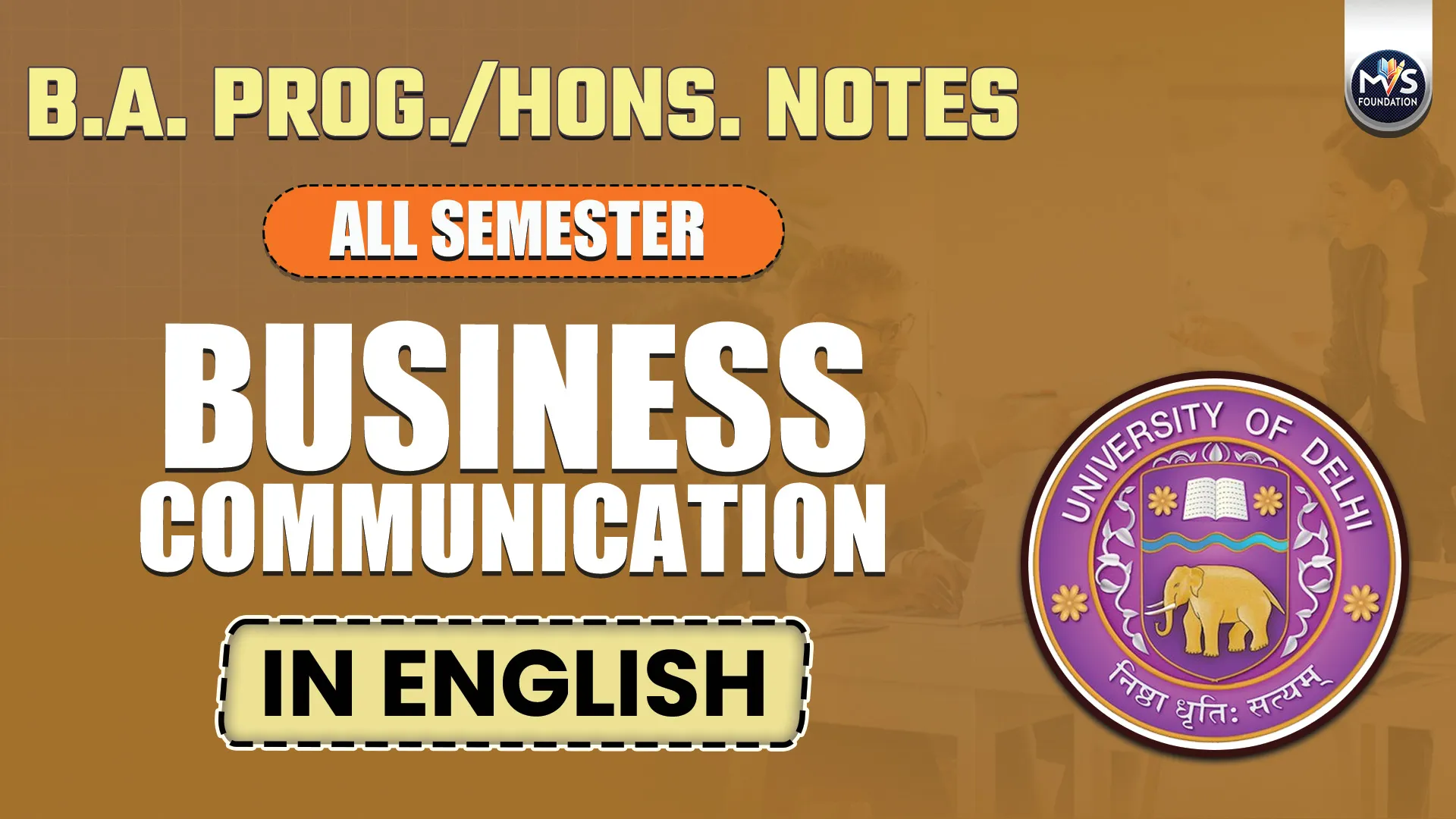
Get in Touch
We will get back to you within 24 hours.
Welcome to MVS Blog

Q1. Describe the key stages involved in the communication process and their significance in ensuring effective communication.
Answer -
Introduction
The communication process includes different steps that help a message go from one person to another in a clear way. Each step plays an important role in making sure the message is understood. If any step is weak or missing, the message may not be received properly, and this can create confusion.
Views of Different Thinkers On Communication
1. Sender: The sender is the person who starts the communication process when they need to share an idea, thought, or message, either because it is necessary or part of their job. They put the message into clear and simple words that the receiver can understand. Then, they send the message using a method both can use, such as talking, texting, calling, or emailing.
2. Encoding: Encoding means changing your ideas into a message that others can understand. It can be through words (verbal) or actions and gestures (non-verbal), depending on your skills and the receiver's understanding.
3. Message and Channel: The message is the information or idea that the sender wants to share. The channel is the medium or path used to send that message, like speech, writing, phone, email, or face-to-face conversation. For Example: Water flows through pipes - water is the message, pipes are the channel. Similarly, if the message is spoken, the channel can be a phone call or face-to-face talk; if written, it can be email or post.
4. Decoding: Decoding means understanding the message by the person who receives it. How well the message is understood depends on how clearly it was sent, how good the receiver is at understanding, and if there is no noise or disturbance while listening.
5. Receiver: The receiver is the person or group who gets the message and tries to understand it. The receiver needs to pay attention and be ready to understand the whole message, including both the spoken words and body language or expressions.
6. Feedback: Feedback is the reply or reaction of the receiver to the message. It is the last step in communication and shows whether the message was understood the way the sender meant it. In one-way communication, like notices or memos, feedback doesn't happen.
7. Noise or barriers: Noise or barriers are anything that blocks or disturbs communication, making it hard for the receiver to understand the message. This can be caused by loud sounds, stress, emotions, health problems, or unclear language.
"For Example:
| Step | Example |
| Sender | Teacher wants to send a reminder |
| Encoding | Teacher writes: "Submit your homework by 10 AM tomorrow |
| Channel | Text message sent through phone |
| Message Received | Student gets the message |
| Decoding | Student reads and understands it |
| Feedback | Student replies: "Okay, I will submit it." |
| Noise/Barriers | If phone was off or message was unclear, the message might not be understood |
"Significance of the Communication Process in Ensuring Effective Communication"
1. Clarity and Understanding: The communication process helps people understand each
other clearly. It reduces confusion by making sure the message is simple and easy to follow. This helps in sharing ideas correctly and avoiding misunderstandings in daily life or work.
2. Reduces Barriers: When we understand each part of the communication process, it
becomes easier to spot and remove barriers like language problems, emotional issues, or background noise. This makes communication clear and easy to understand, especially when people are from different cultures or in big organizations. It helps everyone understand the same message, avoid mistakes, and work together better.
3. Improves Decision-Making: Clear, correct, and on-time communication helps people
make better decisions. It gives the right information so everyone understands the situation, thinks about different options, and works well together. This leads to smart and confident decisions in business and group settings.
4. Avoids Conflicts: The communication process helps prevent arguments and
misunderstandings. When people share information clearly and listen to each other properly, there is less chance of confusion or wrong assumptions. This creates a positive and peaceful environment at home, work, or in any group.
5. Builds Strong Relationships: Effective communication creates trust and understanding.
Clear sharing of ideas and active listening prevent misunderstandings and make people feel respected. In families, it strengthens love and care, while at work, it promotes teamwork and cooperation. Open and honest communication is the foundation of strong relationships.
"For Example:
| Step (Significance) | Example |
| 1. Clarity and Understanding | A manager explains dearly: "The meeting will start at 9 AM in Conference Room B." Everyone knows when and where to meet. |
| 2. Reduces Barriers | A doctor uses simple language to explain a medical condition so the patient understands easily. |
| 3. Improves Decision-Making | A project leader shares accurate data with the team, helping them decide on the best solution together. |
| 4. Avoids Conflicts | Two roommates talk openly about cleaning duties and agree, preventing future arguments. |
| 5. Builds Strong Relationships | Family members communicate openly and listen to each other, creating trust and understanding. |
0 Response